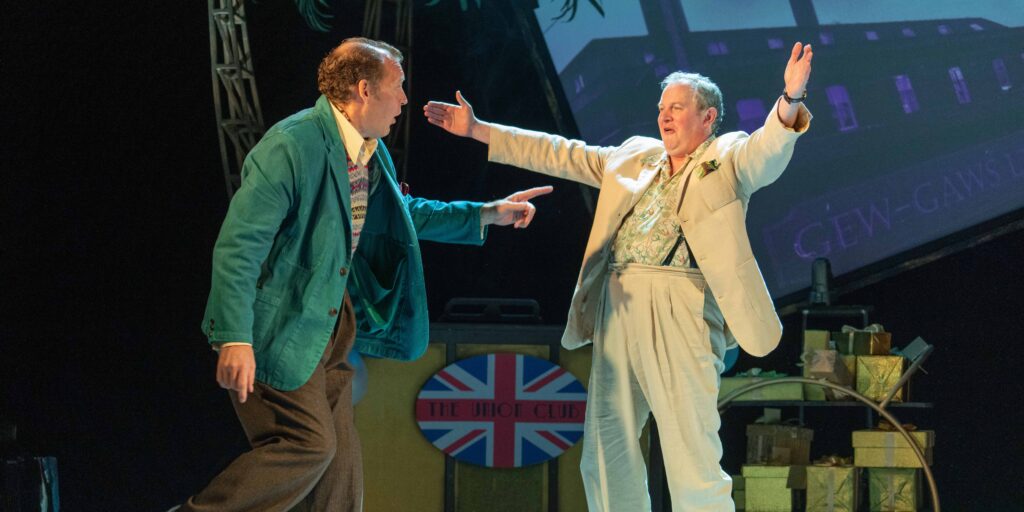
The Lavender Hill Mob
Theatre Royal Brighton
The Lavender Hill Mob is a 1951 comedy film made by Ealing Studios, directed by Charles Crichton and starring a stellar cast that includes Alec Guinness, Stanley Holloway, Sid James and Alfie Bass. The title refers to Lavender Hill in Battersea which is very close to Clapham Junction railway station. The British Film Institute ranked The Lavender Hill Mob the 17th greatest British film of all time and now a new adaptation for the stage arrives in Brighton in the middle of a UK tour.
Henry Holland (Miles Jupp), a shy bank clerk in charge of gold bullions, dreams of leading a more opulent life, so when he comes in contact with a foundry owner, the pair of them plan to smuggle the gold out of the bank. We meet Henry as he lives in Rio de Janeiro having masterminded the theft in the form of Eiffel Tower paperweights. In this version, adapted by Phil Porter, his story is told not as a straight flashback but re-enacted by his expat pals in a Brazilian bar. The boarding house where Holland meets his potential partner Pendlebury (a splendid Justin Edwards), the warehouse where the towers are forged and the Bank of England are all recreated within the Rio club on New Year’s Eve in 1949.
Unfortunately, the set and costume design together with the bland lighting all fail to conjure up the seaside city in Brazil (which was the capital at the time) famous for its beaches and more relevantly for its carnival, samba and bossa nova. There was little colour overall in this production – perhaps the designers were attempting to imitate the black and white film which simply doesn’t work and the projections at the back of the stage seemed futile and unimaginative.
The production relies heavily on the cast of eight and their ability to convince using physical theatre. The performances are universally excellent with Guy Burgess excelling in the role of Farrow who acts as the audience for the retelling of Holland’s caper and Tessa Churchard and Victoria Blunt stealing the show as Lady Agnes and Audrey respectively.
Overall, however, I felt the cast were let down by a very poor adaptation and a lack of imagination and the innovation to succeed in this style of theatre by the director. The whole thing needed the creativity of Emma Rice and her company, Wise Children or the much-missed Kneehigh Theatre Company before that.
The programme cover describes the show as a ’24 carat comedy caper’. It should more accurately be described as 9 carat and probably produced by Ratners.
⭐️⭐️⭐️
Reviewer: Patric Kearns